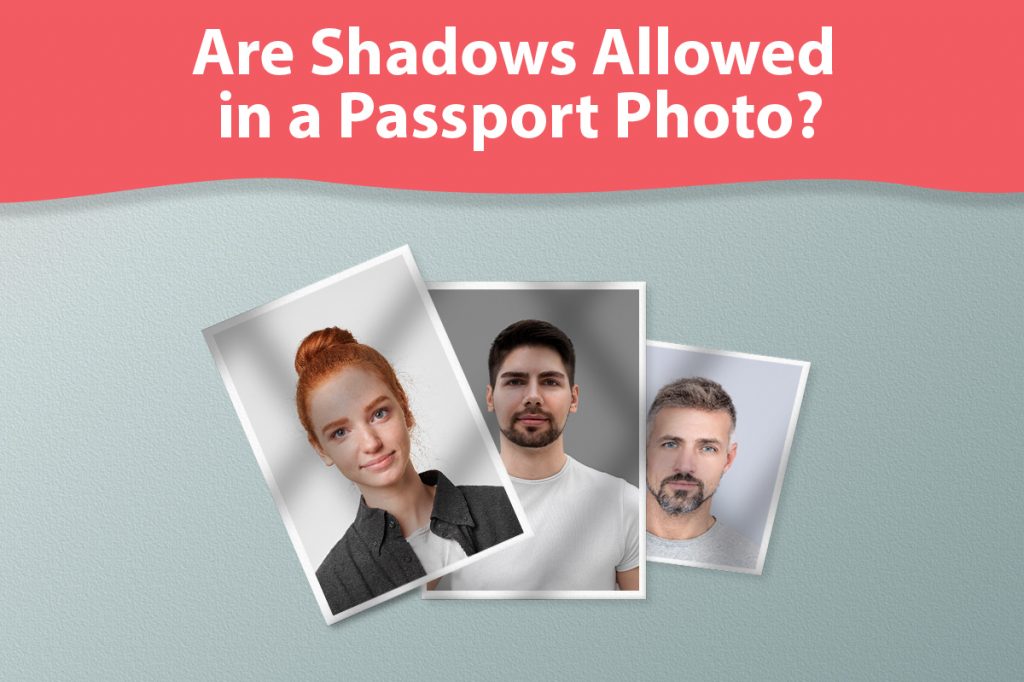When it comes to passport photos, attention to detail is crucial. From proper lighting to facial expression, every aspect plays a significant role in ensuring a clear and accurate representation. However, one aspect that deserves careful consideration is the presence of shadows. Shadows can obscure facial features, distort appearances, and potentially lead to complications during identification.

Are Shadows Allowed in a Passport Photo?
Passport photos are not allowed to have shadows. Facial features and the neck should be fully visible without shadows.
Passport authorities mandate clear and unobstructed views of the face to ensure accurate identification and verification.
What Is the Significance of Shadows in Passport Photos?
Shadows in passport photos can impact the clarity and visibility of facial features. Passport photos are used for identification purposes, and clear visibility of the face is crucial for proper identification and verification. However, shadows can obscure facial features, particularly around the eyes, nose, and mouth, making it difficult for authorities to match the photo with the passport holder. Also, shadows may create an uneven or distorted appearance, potentially leading to photo tampering or misrepresentation concerns. Therefore, minimizing shadows in passport photos helps ensure accurate identification and compliance with passport regulations.
How Much Shadow Is Allowed for a Passport Photo?
In general, no amount of shadow on the face is allowed in passport photos. This includes harsh shadows with distinct boundaries and subtle shadows resulting from lighting conditions. However, it is essential to note that there is one exception to this rule. Some passport photo guidelines allow for slight shadows that may naturally occur around the ears due to the shape and contour of the face. These shadows are generally accepted as long as they do not significantly obscure the ear or other facial features.
What Causes Shadows in a Passport Photo?
Various factors can cause shadows in passport photos
- Direct light source. When the light source is positioned directly above or to the side of the face, it can cast shadows on certain areas, such as the eyes, nose, or chin.
- Harsh or uneven lighting. Strong and direct lighting can create harsh shadows, especially if no diffusers or modifiers are in place to soften the light. Similarly, uneven lighting in the environment can lead to shadows on the face.
- Obstructions. Objects like hats, scarves, or glasses with heavy frames can cast shadows on the face if they are not positioned correctly or if their size and shape obstruct the light.
- Facial structure. The natural contours of the face, such as the shape of the nose, or cheekbones, can create subtle shadows even under optimal lighting conditions.
Can I Remove Shadows From Passport Photos?
You cannot remove shadows from passport photos. This is because passport photos must be unaltered and represent your authentic appearance. Therefore, any editing or manipulation, including removing shadows, is generally not permitted. While editing software exists, it is not recommended. Passport authorities rely on the accuracy and authenticity of submitted photos for identification purposes. Editing the photo, even to remove shadows, can raise concerns about photo tampering or misrepresentation. Therefore, you must retake the photo or follow the tips on how to avoid shadows in passport photos.
How Do You Avoid Shadows in Passport Photos?
To avoid shadows in your passport photo, it is crucial to pay attention to lighting. Proper lighting is the key to ensuring an even and shadow-free image. Here are a few tips to help you avoid shadows:
- Choose a well-lit location. Select a brightly lit area with ample natural or artificial light when taking a passport photo. Avoid areas with harsh shadows or uneven lighting conditions.
- Use front lighting. Position the light source, such as a lamp or a window, before you. This helps minimize shadows by evenly illuminating your face.
- Avoid backlighting. Be cautious of having the light source directly behind you, as it can create unwanted shadows on your face. Instead, ensure the light is in front of you or evenly distributed.
- Soften harsh lighting. Consider diffusing the light to avoid strong shadows using artificial lighting. You can do this using a lampshade or covering the light source with a thin fabric.
- Check for any obstructions. Ensure that no objects or accessories cast shadows on your face, such as hats, scarves, or glasses with heavy frames. Remove them temporarily for the photo.
Why Does Red-Eye Occur in Photos?
Red-eye occurs in photos when a camera flash reflects off the eye’s retina. This reflection happens when the pupils are dilated in low-light environments. While red-eye is not directly related to shadows, the presence of shadows can contribute to its occurrence by affecting the lighting conditions. Therefore, minimizing red-eye can be achieved using proper lighting techniques, red-eye reduction features, or avoiding direct flash.
Can I Use a Reflector or Additional Light Source to Fill in the Shadows on My Face?
You can use a reflector or an additional light source to minimize shadows on your face. However, it is important to remember that passport photo guidelines emphasize the need for even lighting without any shadows. That is why it is generally recommended to avoid introducing additional light sources or reflectors that might create new shadows or disrupt natural lighting conditions.
Why Is Lighting Important in a Passport Photo?
Lighting is essential in passport photos for several reasons. First, your facial features are visible and accurately represented, allowing for accurate identification and verification by passport authorities. Even lighting helps eliminate shadows, which can obscure facial details and create an uneven or distorted appearance. Good lighting also contributes to a professional and presentable image, reflecting positively on your overall application. Finally, by ensuring consistent and adequate lighting, your passport photo will meet the required standards, reducing the chances of rejection or delays in the application process.
